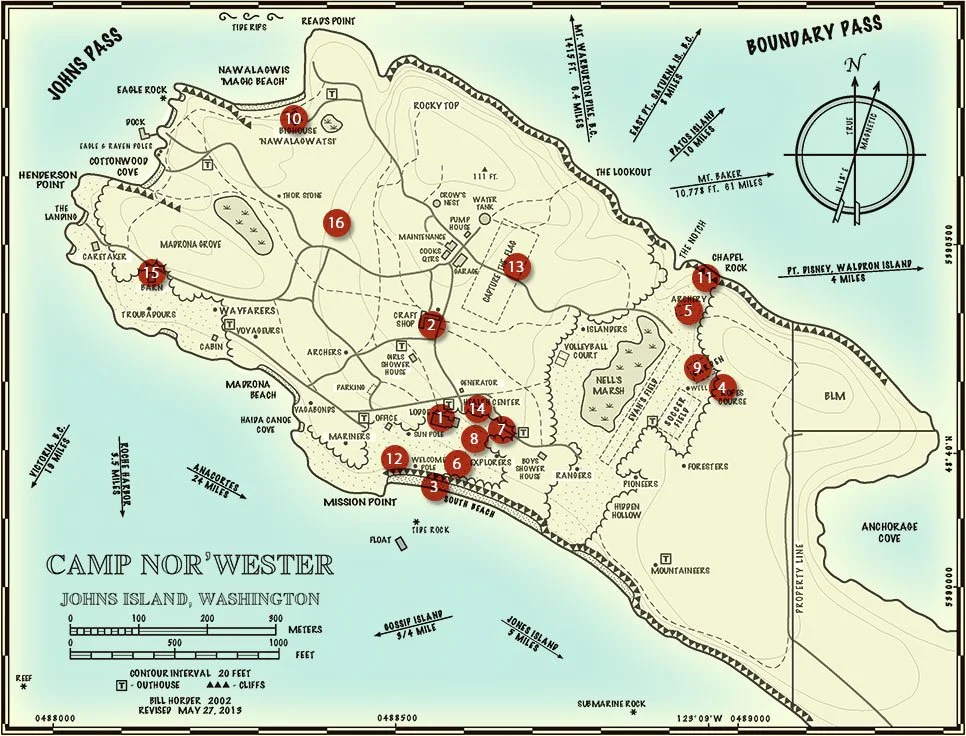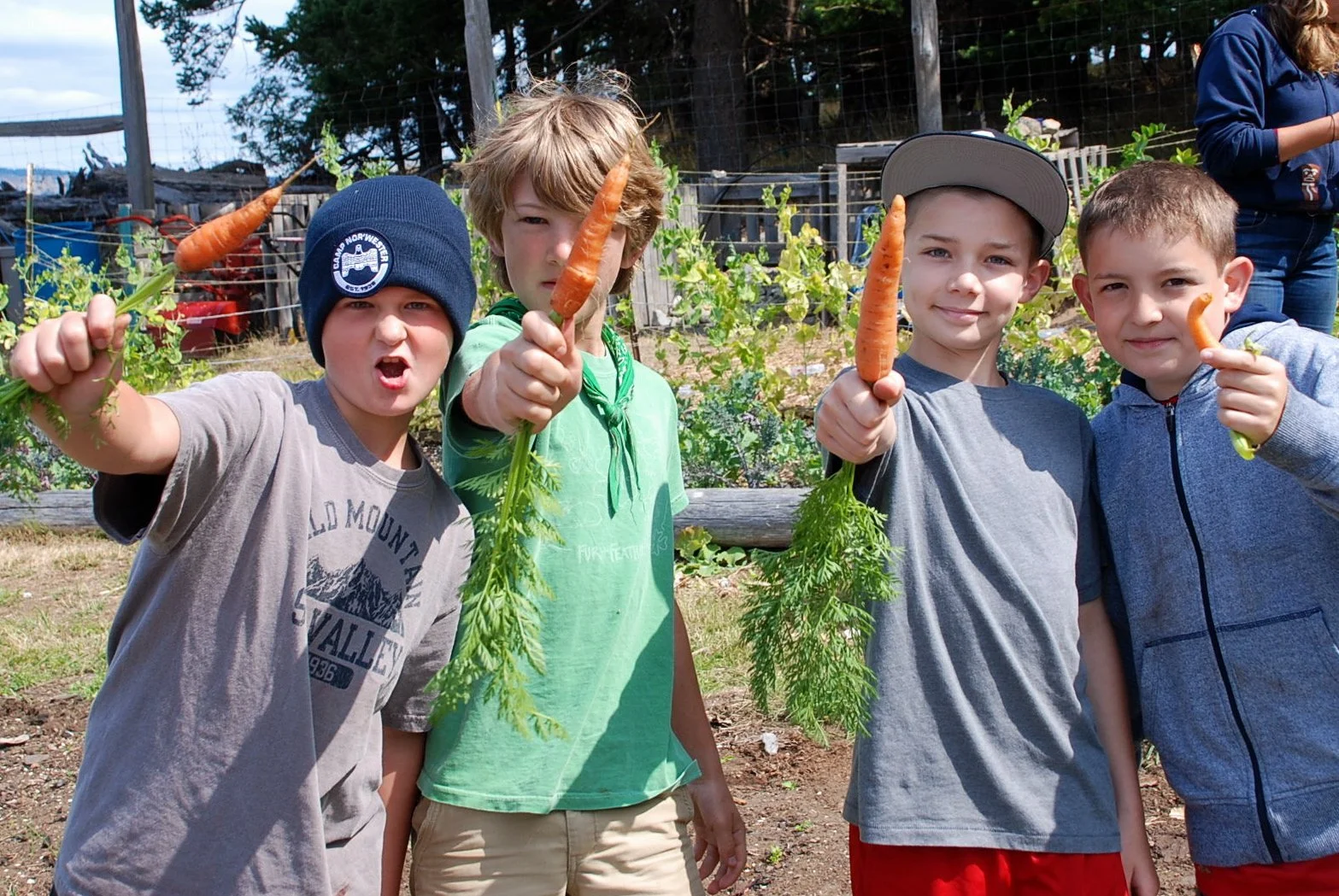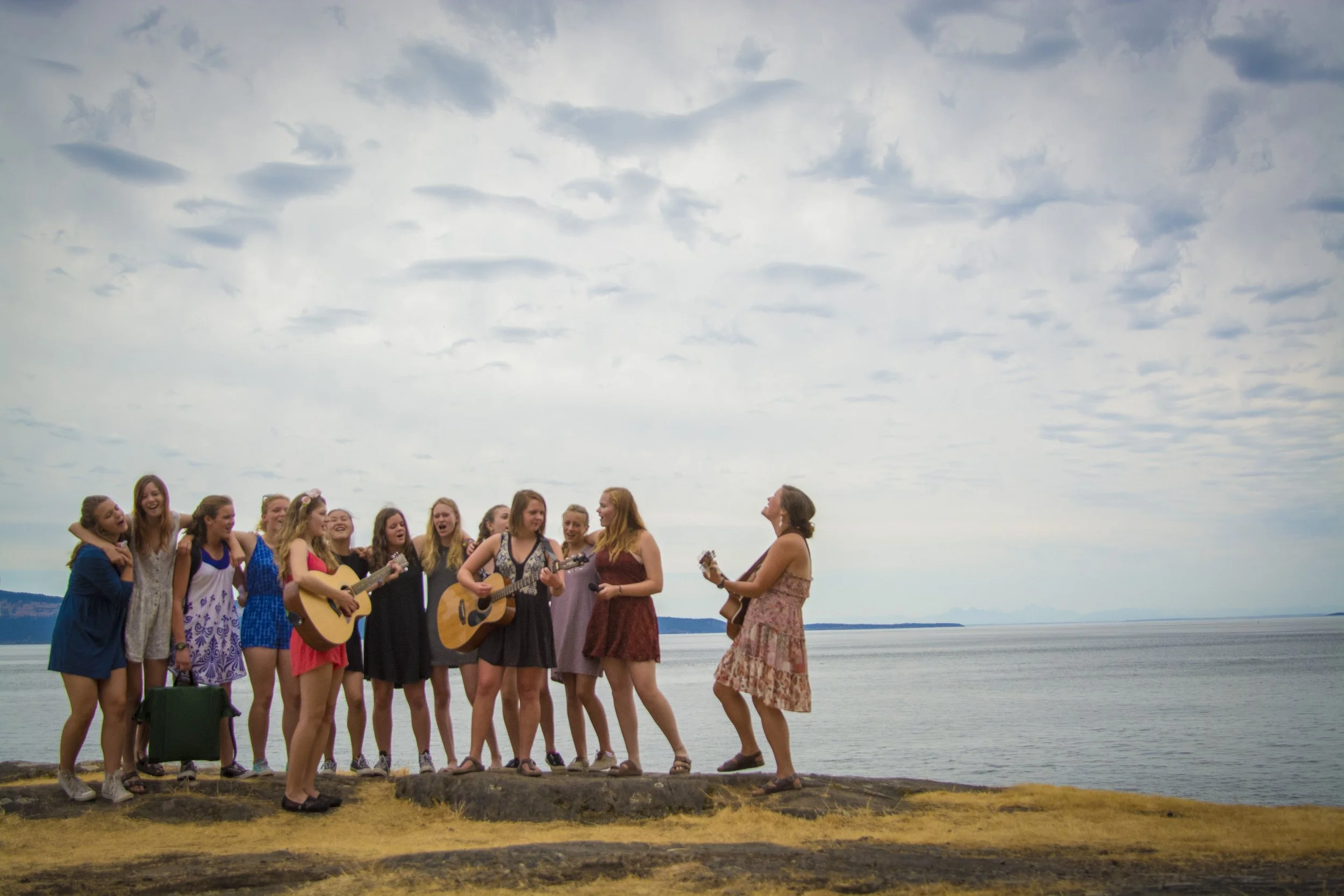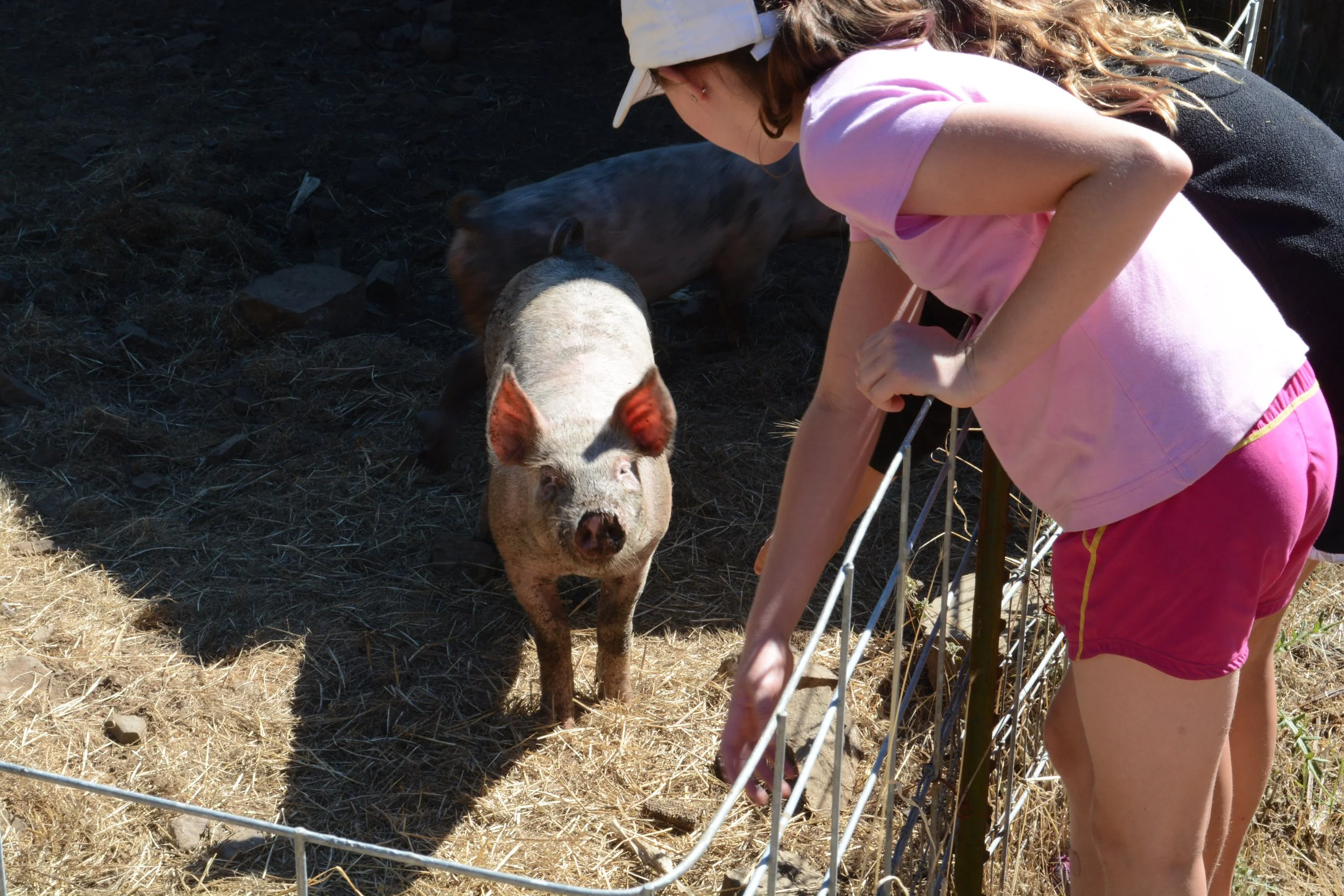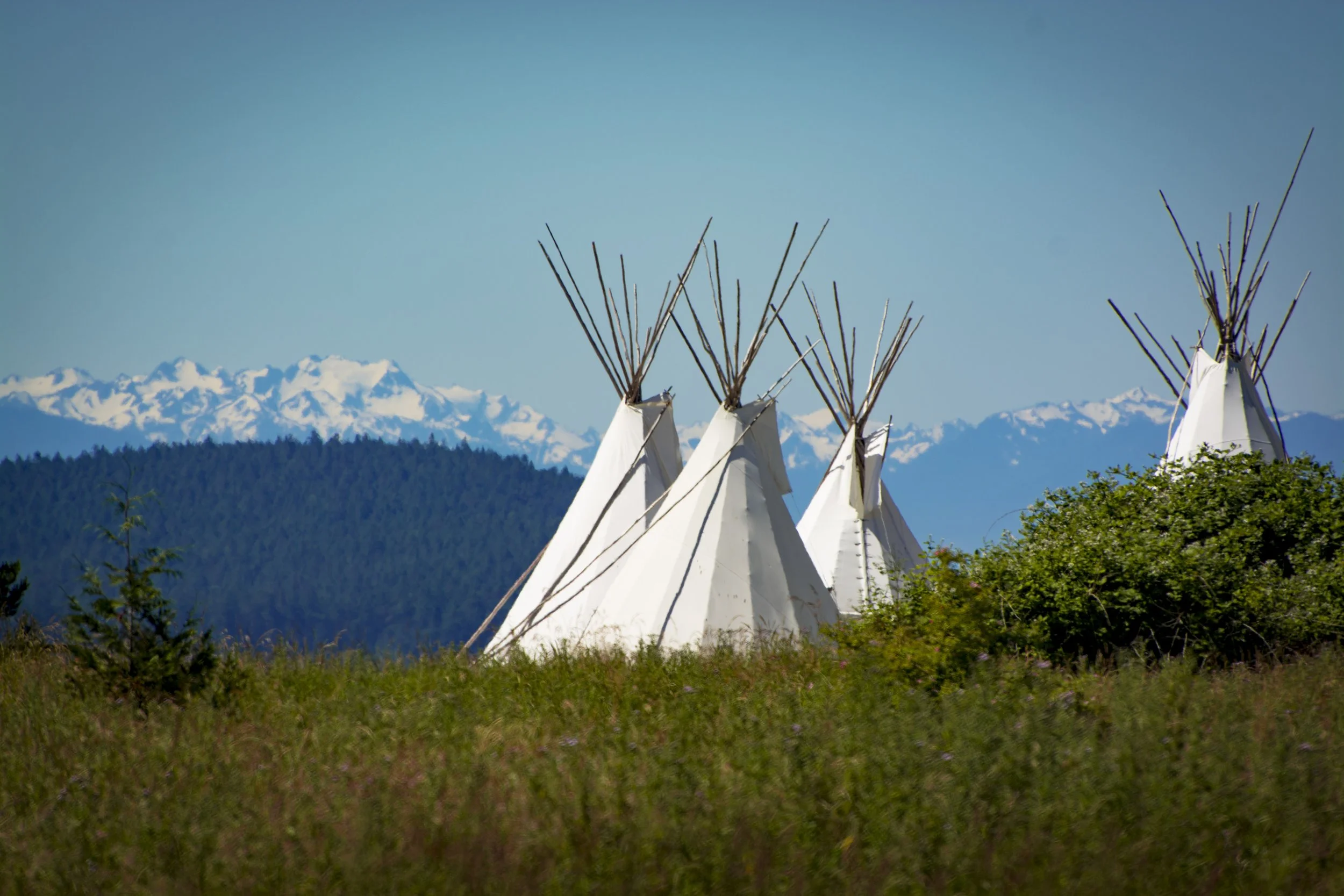Explore Camp Nor’wester

Camp is located on ancestral lands of all tribes and bands within the Lhaq’temish (Lummi), Samish, Swinomish, Noxwsaag, WSÁNEĆ (Saanich), Songish, T’souk-e (Sooke), Nəxʷsƛayəm, and Semiahmoo Nations. We acknowledge the people who owned the land before us and are grateful for their stewardship. Johns Island is called W̱ȾÁEMEṈ by local indigenous groups, which means “the sound of barnacles at low tide” [W̱ȾÁEMEṈ; “the sound of barnacles at low tide”, Lummi dialect, WSÁNEĆ elder, KANTENOT, Helen Jack].
The Lodge
-
We meet here at least three times a day for meals. It’s where we sing camp songs as a community and share announcements and accomplishments of the day. Two to three times a week dances are held here—but not your regular school dance. We learn folk, contra and square dancing! There is a spectacular view looking out over the water, especially since the entire south side is open to the elements! It’s always a good idea to wear a warm jacket to breakfast—the mornings can be chilly.
2. The Craftshop
-
Being one of our core program areas, the craftshop is an amazing space – we are consistently amazed by all of the creative projects made by camper and staff each season. Our ten craftshop staff are prepared to give instruction in a variety of areas including: sewing, painting, ceramics, woodworking, textiles, print making, book making, jewelry, weaving and more. All projects are inspired and designed by the individual – everything is made from scratch! Campers and staff alike love this department because you are free to experiment and try new ideas.
3. The Waterfront
-
South Beach is home to our canoeing, kayaking and sailing program. As a unit, campers will begin with a short dry land skills session before setting up the boats and getting them ready for experiential use. During hour- or hour and a half-long sessions, campers will get the chance to paddle or sail within our boundaries, and Units can also sign-up for a longer session to attempt to circumnavigate Johns or travel to Gossip Island for lunch. We teach canoeing in traditional two-person boats, and also in our two fiberglass Nootka-style canoes. These “Hunt Canoes” can hold up to nine people each and are an opportunity unique to Nor’wester. Campers learn kayaking in two-person ocean kayaks, and some units take them on overnight trips to a campground on a nearby island. For sailing, we are fortunate to teach basic skills in Picos that hold three to four campers each. For advanced learning and outcamp trips, our new fleet of 19’ Lightnings made in 2014 are perfect. Lightnings have been sailed at camp since the 1950s, and we’re committed to continuing the tradition for years to come. Open beach time or swimming also happens from time to time on the shores of the beach here.
4. The Challenge Course
-
Elements on the Challenge Course provide key opportunities for unit challenge, problem-solving and growth. Our course includes a Whale-Watch, Wobbly Log, Hole-in-Space, Nitro Crossing, High Beam, Vertical Playpen, the Multi-Vine and much more! Campers are presented with group challenges to promote team-building and communication and work through those on their way to higher-level elements. This program is graduated, meaning certain elements are reserved for older campers, to ensure age-appropriate challenges and a varied experience for multiple-season returning campers. Plus, it’s all built into the forest!
5. The Archery Range
-
Archery is a favorite activity of many campers and our open range is the place to practice! With four standard foam targets and both compound and recurve bows of many sizes, all campers can build their skills here. In addition to teaching standard shooting techniques, our Archery Instructor will also frequently lead games including shooting at customized dinosaur or map targets and sometimes campers can work up to shooting at a moving target!
6. Nature
-
Nature is all around us on Johns – we are so lucky to see large wildlife like eagles, seals and our resident deer population almost daily, along with the occasional heron, raven and even orca whales from the property! Campers meet at this location before our summer Naturalists get them out and interacting with the varied habitats we have access to, including marshes, ponds, forests, tidepools, meadows and beaches.
7. Drama Shed & Madrona Theater
-
A great collection of costumes and props are stored in a brand new (2022) space called the “Drama Shed.” This and the just-renovated Madrona Theather make up our facilities for daily Drama activities, including theater games as a unit and skit rehearsals for Campfires, Coffee House, and Musicales. The theater has seating for at least two units at a time and is also used for special gatherings and evening activities.
8. Outdoor Cooking
-
Units love activities at Adobe, which can include baking pizzas or pastries, roasting fresh vegetables from the Garden, or putting together a full meal plan to eat out of the lodge for dinner! Our brick oven is heated by a wood fire and then cleared when it’s time to put in the recipe and let the heated bricks do the rest of the work. Cinnamon rolls are a classic favorite! Gluten free options are generally available to ensure inclusion of all campers in the process.
9. The Garden
-
This area has seen much improvement in the past few years – the installation of raised beds in 2013 and 2014 has given us a more-efficient use of space and allows us to develop more elements like a fruit orchard, herb spirals, an improved composting system, and soon, a grapes-covered cabana! Campers learn about all aspects of the agricultural process, from planting to weeding to harvesting. Although we hire a skilled Gardener each summer, care of the garden is a community responsibility – one we all get to enjoy when a meal in the lodge is supplemented by fresh veggies from our own property!
10. The Bighouse
-
Named Nawalagwatsi or “Receptacle of Magic,” the Bighouse is the place where our Northwest Coast cultural activities come into focus. Nawalagwatsi was built largely by volunteers in the style of the traditional houses of the Kwakwaka’wakw people of northern Vancouver Island, with whom Camp Nor’wester has had a close relationship for over 60 years. Traditional dances and Nor’wester potlatches are held in its fire-lit interior, with its monumental carved houseposts and painted screens. Rainy-day activities are sometimes held in its inviting space. Check out our History and Tradition page for more information on indigenous education and activities at camp.
11. Chapel Rock
-
An outcropping of rock looking Northeast toward the Canadian Cascades, Chapel Rock is the location of our community meetings held once a week to explore topics and themes chosen by the hosting unit. Friendship, trust, how to take our Camp habits back with us to “real” life, success and failure, and facing adversity have been just a few recent topics units have decided to discuss and present about in recent summers. This is a cherished time for reflection and sharing, and opportunity for the community to come together to celebrate true Nor’wester values.
12. The Campfire Stage
-
Overlooking South Beach, the stage is the location of our weekly Campfire skits. Units or smaller groups of campers and staff can design a skit to perform on stage for the whole community, or perhaps you’ll be called up for a spontaneous “Brown Bag” skit without warning! The waters of the sound and Speiden Island make a great backdrop for all kinds of comedic performances.
13. Capture the Flag Course
-
A truly timeless favorite, Capture the Flag is generally an evening activity that units sign-up to play with one or three other units. Set in the forest, our course is cleared of brush and debris regularly by work crews to keep it as safe as possible. There aren’t many activities more traditionally “camp” than CTF, and our campers would love running through the trees in search of the opposition’s hidden flag long into the evening if they could.
14. The Health Center
-
We hope you never need to visit the Health Center, except to say “Hello” to the nurse staff because they’re just so cool. But just in case, we have qualified medical staff, including an RN and an assistant, available 24 hours a day. They can take care of colds, scraps, bruises, tummy aches and more. We have a number of campers and staff who come with their own medications and our health center staff make sure everyone receives their meds on time. We also have a great relationship with the medical providers on San Juan Island in case we need additional assistance. The Health Center building was just renovated in 2014 too – making it much more comfortable in case you do need to spend time there.
15. The Pig Barn
-
This is a wonderful building that, once its restoration is complete, will become a working barn as well as the home of Nell Robinson memorabilia. Nell was the woman who lived on Johns Island for many years, raising a family and sheep. She was a strong spirited and independent woman, who we are told would have been very pleased to know that hundreds of children are now spending part of their summer on her property. Currently, five hungry pigs call the barn home in the summers!
16. The Climbing Wall
-
Our 28’ climbing tower it tucked away in the woods and is a great spot to challenge yourself, learn techniques, and climb to new heights. Units can participate as a group, and individual campers can sign-up for climbing during free-choice opportunities as well!
The Island & Region
W̱ȾÁEMEṈ – Johns Island
Our unique 135-acre property is the old Nell Robinson Ranch at the west end of Johns Island, in the San Juan Islands of Washington State. It is located on ancestral lands of all tribes and bands within the Lhaq’temish (Lummi), Samish, Swinomish, Noxwsaag, WSÁNEĆ (Saanich), Songish, T’souk-e (Sooke), Nəxʷsƛayəm, and Semiahmoo Nations. We acknowledge the people who used the land before us and are grateful for their stewardship. WȾÁEMEṈ is a local indigenous name for the island, and means “the sound of barnacles at low tide”
[W̱ȾÁEMEṈ; “the sound of barnacles at low tide”, Lummi dialect, WSÁNEĆ elder, KANTENOT, Helen Jack].
Surrounded by over 10,000 feet of saltwater shoreline, the area includes wetlands, open meadows and diverse forests.
A long sandy beach flanks the south shore, while many intimate coves dot the north. The property is home to numerous old growth firs, gigantic Madrona and Garry Oak.
It is a haven for bald eagles, otters, mink, seal, deer and a multitude of wildlife. Coves and beaches piled high with driftwood are alive with seabirds and shellfish.
The snow-capped Olympic and Cascade peaks and other San Juan Islands are visible from many points on the property. The open meadows and undulating shoreline allow for many planned and spontaneous activities. Virtually the entire property is child-friendly and ideal for camp activities and exploration.
San Juan Islands
Being on a remote island in the San Juans allows our campers access to an incredibly unique and biologically diverse part of the world. Canoe, kayak, sailing and bike overnights and multi-day trips (beginning at age 12) offer a chance to visit and explore many islands.
We frequent state campgrounds and have also been granted access to several private properties in the San Juans.
The combination of our incamp and outcamp programs provides our campers with a better understanding of this beautiful region throughout their time at Nor’wester.
The San Juans have a unique beauty all their own, and have been home to the camp throughout it’s over 80-year history.
The mystique and magic of nature are right there for campers to soak up, providing a great space for growth and self-discovery.

